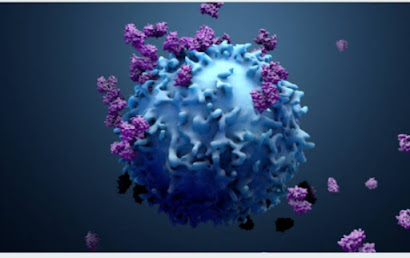SENSOR TECHNOLOGY
SENSOR TECHNOLOGY: HOW TO REVOLUTIONIZE SENSOR TCHNOLOGY https://youtu.be/XI49uFm5HRE
INTRODUCTION
SMART CITY
By definition, revolutionizing sensor
technology is a complex and multi-disciplinary endeavor which concerns a holistic
exploration of different strategies to enhance sensor capabilities, making them
more sensitive, versatile, and efficient.
1. ADVANCE MATERIAL:
Utilizing advanced materials.
Sensor performance heavily relies on the materials used. Advancements in
materials science, such as metamaterial, nanomaterials, or smart materials, can
improve sensitivity, flexibility and the durability of sensors.
2. INTERNET OF THINGS INTEGRATION:
By integrate sensors into the Internet of Things (IoT) for
real-time data collection and analysis and enabling remote monitoring and
control of sensors through IoT connectivity.
3. ENERGY EFFICIENT SENSOR:
Designing sensors with low power consumption to extend the life
battery in remote or portable applications and by making good use of energy
harvesting techniques to power sensors using ambient energy sources.
3. MACHININE LEARNING:
Developing smart sensors that can adapt and learn from their
environment. And also implementing machine learning and artificial intelligence
algorithms for sensor pattern recognition and data analysis.
4. REGULATORY:
Through ethical considerations as regards the collection and
use of sensor data as well as ensuring compliance with regulatory standards and
ethical guidelines, particularly
privacy-sensitive applications and healthcare.
5. WIRELESS COMMUNICATION:
Developing wireless sensor networks to enable seamless data
transmission over long distances by exploring 5G and future communication
technologies to support high data rates for sensor networks.
6. MEMS
TECHNOLOGY:
Proper use of Micro-Electro-Mechanical Systems (MEMS) for
miniaturization and integration of sensors. Furthermore, creating MEMS-based
sensors for various applications, such as accelerometers, pressure sensors and
gyroscopes,.
7. IMPLANTEDABLE
SENSORS:
Ensuring the accuracy, safety and long-term reliability of such
sensors that can be implanted in the human body for health monitoring.
8. BIOLOGICAL AND
CHEMICAL SENSORS:
Through advancing biosensors
for environmental monitoring and healthcare, including enzyme-based sensors and
DNA sensors as well as enhancing chemical sensors for applications like pollution
detection and gas analysis.
9. ENVIRONMENTAL SENSING:
Creating sensors for monitoring
environmental parameters, such as soil conditions, air quality and water
quality including deploying sensor networks for early detection of natural
disasters.
10. CROSS-DISCISCIPLINARY
COLLABORATION:
Promoting knowledge exchange between academia and industry which
involves fostering collaboration between engineers, researchers and experts
from various fields to drive innovation in sensor technology.
11. AUTONOMOUS AND SELF-CALIBRATING
SENSOR:
- Designing sensors that can self-calibrate and adapt
to changing conditions can reduce the need for manual maintenance and
adjustments.
12. SECURITY AND PRIVACY:
The implementation of encryption and authentication
measures to protect sensitive information and addressing security concerns
related to sensor data, especially in critical applications.
13. SKILL DEVELOPMENT AND EDUCATIONE:
Investing in education and training programs to cultivate a
workforce skilled in sensor technology and its applications such as promoting
research in sensor-related fields and
STEM education.
TYPES OF SENSORS
There are various types of sensors but we
shall be discussing few of the several types in this work.
1. PROXIMITY SENSOR: This type of sensor detects the presence
or absence of an
2. TEMPERATURE SENSOR: These sensors measure temperature, often
using thermocouples, thermistors, or infrared sensors Object in close proximity
and are commonly used in robotics and touchscreens.
3. PRESSURE SENSORS: Use to measure
pressure, often found in applications like industrial pressure monitoring or
barometers.
4. MOTION SENSOR: These include accelerometers, gyroscopes, and
magnetometers, which measure motion and orientation. They are frequently used
in smartphones and gaming controllers.
|
6. INFRARED (IR) SENSORS: Sense
infrared radiation and are commonly used in presence detection and remote
controls
7. RESISTIVE
AND CAPASITIVE TOUCH SENSOR: Used in touchscreens and touch-sensitive interfaces.
8. ULTRASONIC
SENSORS: They use sound waves to determine distance and are found
robotics and parking assist systems.
9.
HUMIDITY SENSORS: Measure the level of moisture in the air and are
crucial in HVAC systems and weather stations.
10. IMAGE
SENSORS: This type of are found
in scanners and cameras, they convert light into electrical signals for image
capture.
11. GAS
SENSORS: They detect the presence and concentration of various gases,
commonly used in industrial safety and environmental monitoring.
12. BIOMETRIC
SENSORS: They can capture unique biological data like fingerprints,
facial features, retinal patterns, for security and identification and security
purposes.
13. SOUND
SENSORS: Detect sound waves and are used in pollution monitoring as well
as microphones.
14. FORCE SENSORS: Measure force and
are used in applications like weight scales and automotive airbags.
15. CHEMICAL
SENSORS: They are used to detect chemical compounds, frequently used in
industrial processes and environmental monitoring.
16. STRAIN
SENSORS: Used in measure strain in materials, also in structural health
monitoring and industrial equipment.
17. RADIATION
SENSORS: Detect various types of radiation, such as scintillation
detectors for gamma rays or Geiger-Muller counters for ionizing radiation.
18. VIBRATION SENSORS: They measure
vibrations and oscillations in machinery and structures for condition
monitoring.
19. BIOLOGICAL
SENSORS: Used to measure biological parameters like blood glucose,
heart rate, or oxygen levels and are found in medical devices.
20. POSITION
SENSORS: Which can determine an object's location or position, often
used in automotive or robotics systems.
21. COLOUR
SENSORS: They detect and measure colours and are used in applications
like colour sorting machines and colorimeters.
THE ROLES OF SENSOR
TECHNOLOGYTO ENSURE SUSTAINABILITY, SOCIAL RESPONSIBILITY AND OVERALL QUALITY
OF LIFE
Sensor technology
plays several important roles in ensuring social responsibility,
sustainability, and the overall quality of life in various ways. They are:
1. ENERGY EFFICIENCY: Certain energy smart sensors in
buildings and infrastructure enable energy conservation by optimizing cooling,
heating, and lighting systems. This lowers utility bills, reduces energy
consumption, and contributes to sustainability efforts.
2. ENVIRONMENTAL MONITORING SENSORS:
These sensors are used to monitor air and water quality, climate conditions,
pollution levels etc. This data helps authorities take necessary actions as
regards ways to reduce environmental impact and improve the quality of the
environment, which ultimately benefits public health and quality of life.
3. TRAFIC MANAGMEN: Traffic
sensors and smart transportation systems can reduce emissions and congestions,
making urban areas more livable and environmentally friendly. They also promote
public transportation.
4. AGRICULTURE:
Sensors used in agriculture can optimize irrigation crop management and
fertilizer use. This results in sustainable farming practices, improved crop
yields, and which ensures food security
5. HEALTHCARE: Medical
sensors monitor patient health and vital signs, enhancing the quality of
healthcare. Telemedicine contribute to better patient convenience and general
out outcomes.
6.
WASTE MANAGEMENT: Smart waste bins equipped with sensors can
optimize waste collection routes, reduce costs, and minimize the environmental
impact of waste disposal.
7. SOCIAL
INCLUSION: Sensory technology can be adapted to assist people with
disabilities, such as using smart sensors to provide accessibility features and
improve the overall quality of life for those people.
8. SAFETY AND SECURITY: Smart
sensors homes and cities enhance safety and security by detecting intruders,
monitoring for hazards and giving quick response to emergency situations.
9. WATER MANAMENT: Sensors
are used to detect leaks, monitor water quality and manage water resources
efficiently. And this reduces wastage
and ensures a clean water supply.
10. DISASTER PREPAREDNESS:
Early warning systems, often relying on sensor technology, can alert
communities to natural disasters like floods, earthquakes or hurricanes help in
saving lives and mitigate damage.
THE NOVEL APPLICATION OF SENSOR TECHNOLOGY
1. ENERGY MANAGEMENT: Sensors
are employed to optimize energy usage in buildings and industrial facilities.
Novel applications include sensors that adjust lighting and climate control
based on occupancy and environmental conditions.
2. SPORTS
AND FITNESS: Wearable sensors help athletes and fitness enthusiasts
monitor their performance. Novel applications include sensors embedded in
sports equipment for real-time feedback on technique.
3. SMART CITIES: Sensors are
integral to creating smart cities. Novel applications include smart parking
systems that detect available parking spaces and adjust traffic signals for
optimal traffic flow.
4. HEALTHCARE
AND MEDICAL DEVICES: Sensors are used to monitor patient vital signs,
detect anomalies as well as give medication. Novel applications include
ingestible sensors for monitoring gastrointestinal health and wearable devices
that track blood glucose levels of the body.
5. AGRICULTURE: Sensors are
used in precision agriculture to monitor soil conditions, crop health, and
weather. Novel applications involve drones equipped with multispectral cameras
for precision agriculture and real-time monitoring of crop health.
6. ENVIRONMENTAL MONITORING:
Environmental sensors are used to monitor water and air quality. Novel
applications include underwater sensors for studying marine ecosystems and
sensors mounted on satellites for monitoring global climate change.
7. MANUFFACTURING:
Sensors play an important role in the Industry 4.0 revolution. Novel
applications include the use of sensors for predictive maintenance in
manufacturing equipment, ensuring minimal downtime.
8. AUTOMATIVE INDUSTRY: The
development of autonomous vehicles heavily relies on sensor technology. Novel
applications include LiDAR sensors for object detection and real-time mapping.
9. AUGMENTED REALITY (AR) AND VIRTUAL
REALITY (VR): In AR and VR applications, sensors are used for tracking
user movements, enabling immersive experiences. Novel applications include VR
headsets with eye-tracking sensors for realistic interactions.
10. SECURITY: Advanced
security systems use sensors for intrusion detection. Novel applications
include biometric sensors for more accurate and secure access control.
11. SPACE EXPLORATION:
Sensors are used in spacecraft to gather data from distant planets and
celestial bodies. Novel applications include sensors for studying exoplanets
and searching for signs of life in space.
12. RETAIL: Retailers use
sensors for customer analyst and inventory management. Novel applications
include smart shelves that monitor product availability and shopper behavior.
13. ENTERTAINMENT: Sensors
like gyroscopes and accelerometers are used in gaming controllers and
interactive installations. Novel applications include gesture recognition
technology for more intuitive gaming experience.
CUSTOMER
OF CUSTOMERS IN RETAIL SENSOR TECHNOLOGY
Retail business
context, the concept of "customer of customers" typically refers to
understanding the end customers or consumers of the products or services being
sold. Sensor technology plays a crucial role in this understanding by providing
valuable data and insights. Here's an explanation of how this works:
1. CHECKOUT AND PAYMENT: Retailers
are increasingly implementing sensor-based checkout solutions like contactless
payment systems. This simplifies the payment process for customers, improving
their overall experience.
2. CUSTOMER TRACKING: Retailers use
sensor technology like RFID (Radio-Frequency Identification), beacons, and
cameras to track and analyze customer behavior. These sensors can monitor foot
traffic, customer movement within the store, and even the time spent in
specific aisles or areas.
3. INVENTORY MANAGEMENT: Sensors
help retailers keep track of inventory in real-time. This ensures that products
are always available for customers when they want them. By accurately managing
stock, retailers can prevent stockouts and overstock situations, which ultimately
benefits the end customer.
4. CUSTOMER INSIGHTS: Sensors can
collect data on customer preferences, such as the products they interact with
most or the areas they frequently visit. Retailers can then use this data to
personalize marketing and offers, enhancing the shopping experience for the end
customers.
5. SECURITY AND SAFETY: Sensors are crucial for ensuring the security and
safety of both customers and employees. Surveillance cameras, for example, can
deter theft and provide evidence in case of incidents. Fire and smoke sensors
enhance safety within the retail space.
6. ENVIRONMENTAL CONTROLS: Sensors
can help maintain the ideal shopping environment by monitoring and adjusting
factors like temperature, lighting, and air quality. This contributes to the
comfort and satisfaction of the end customers.
7. SUPPLY CHAIN
EFFICIENCY:
Sensor technology is not limited to the in-store experience. It can also be
used throughout the supply chain to track the movement of products from
manufacturers to retail stores. This ensures that goods are delivered
efficiently, reducing delays that could affect the end customer.
Finally, the
revolution in sensor technology will have to rely on a multidisciplinary
approach, encompassing advanced materials, a focus on ethical and regulatory
considerations, cutting-edge technologies. Engineers, researchers and
innovators will play a vital role in pushing the boundaries of sensor
capabilities to meet the evolving demands of various industries. And thereby
enhance social responsibility, sustainability and quality of life which
provides insights and data to improve convenience and safety for individuals
and the communities at large.





Comments
Post a Comment